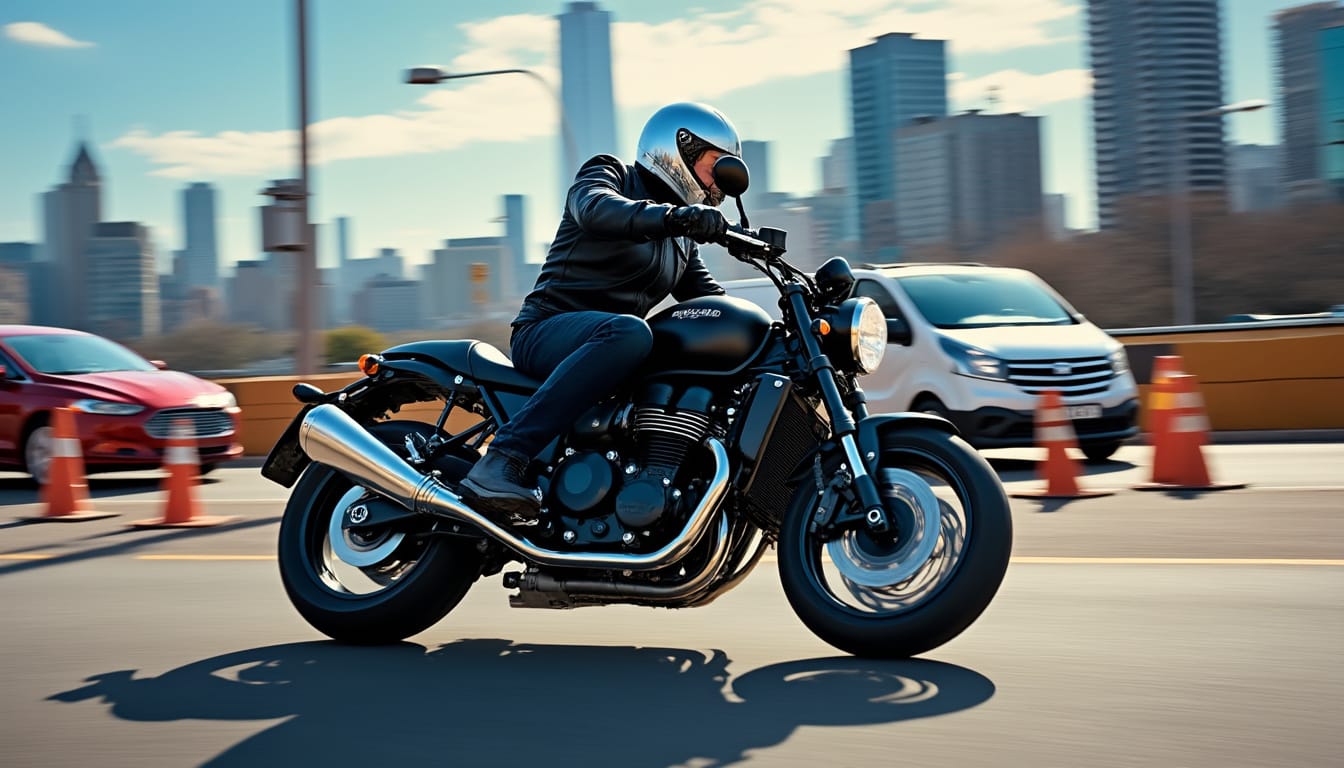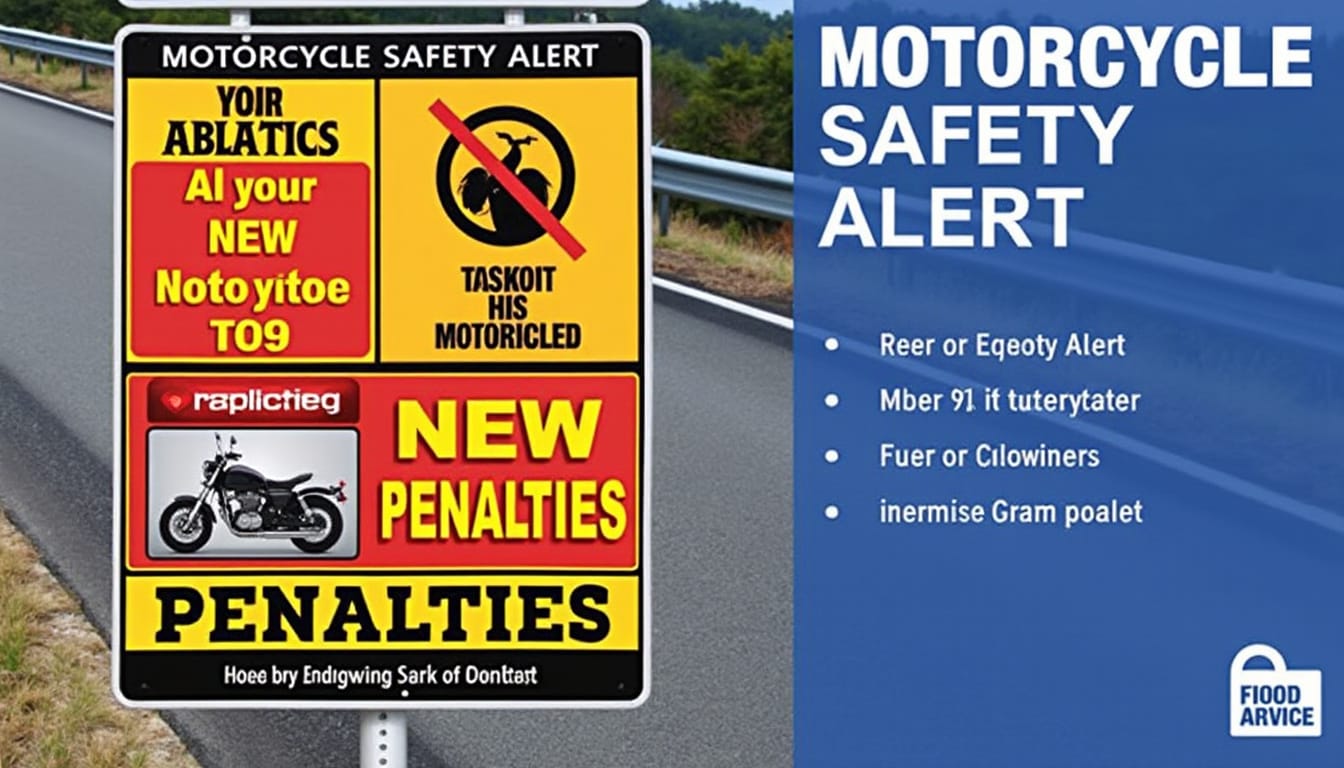The Interfile of Motorcycles: An Outdated Practice Starting January 1, 2025, Debate and Controversies Await
For nearly ten years, motorcycles have had the opportunity to weave between cars in traffic jams thanks to lane splitting. However, this practice, as appreciated as it has been by riders, is about to undergo a radical change. Starting January 1, 2025, this experiment will officially come to an end, making lane splitting illegal. The consequences of this change raise serious concerns and questions within the two-wheeled community.
This decision marks a significant break for many riders, who have learned to navigate through traffic more fluidly. The current rules, which allow for the possibility of riding between lanes of vehicles, have been extended several times, but now, the end of this tolerance raises eyebrows. How will this decision influence the mechanics of urban mobility for motorcycles? What sanctions will there be for those who defy this rule in the near future? This article examines in depth these new regulations, the reasons behind this decision, and the reactions it provokes among road users.
History of Lane Splitting
Lane splitting, officially named LS, is a practice that was first introduced in France in 2016. It allows narrow motorcycles and scooters to maneuver between cars in heavy traffic situations. The initial goal of this measure was to improve traffic flow, reduce road congestion, and theoretically decrease the number of accidents involving two-wheeled vehicles. This provision has been extended several times, particularly in departments like Île-de-France, where traffic jams are particularly frequent.
The authorities had committed to providing a precise assessment of the impact of lane splitting on road safety. While initial reports indicated a decrease in accidents, other data showed a significant increase in certain areas. For example, in departments like Gironde, the number of accidents related to lane splitting tripled, raising legitimate questions about the viability of this practice.

Road Safety Clauses
In terms of road safety, the rules surrounding lane splitting included strict conditions. For example, the speed of motorcycles had to be limited to 50 km/h, and the circumstances under which they could overtake vehicles were clearly defined. The intention was to minimize risks, but the reality of French roads highlighted a challenge: riders often had to assess in real time if there was enough space to pass. This sense of imminent danger could be a source of stress for many.
The assessment of this experiment remains mixed. While some users praise the advantages of lane splitting, others highlight the lack of specific regulations surrounding this practice. Beyond the numbers, there has also been a growing awareness of the behavior of car drivers in relation to this maneuver. Interactions between motorcycles and cars occur at high speeds, which can create perilous situations.
The Upcoming Regulations
With the arrival of January 2025, road users must prepare for new traffic rules. The end of lane splitting means that motorcycles will no longer be able to weave between cars and must change lanes, adhere to speed limits, and, above all, comply with the regulations of the Highway Code.
The penalties for those who do not comply with this new regulation are severe. Offending riders will face a fine of 135 euros and a withdrawal of three points from their driver's license. This raises questions about how this transition will be received by riders and how these new rules will be enforced by law enforcement.

Impact on Urban Mobility
The regulatory changes will have notable consequences on urban mobility. For many riders, the ability to navigate between vehicles was perceived as a way to save time. By forcing motorcycles to use regular lanes, we could logically see a regression in the fluidity of movement. This could lead to further delays in already problematic situations.
Furthermore, it will be interesting to observe how these changes affect driver behavior. The coexistence of cars and motorcycles is often complex, and the removal of the latitude afforded by lane splitting could lead to an increase in friction on the road. Motorcycle riders may resort to riskier behaviors in an attempt to navigate through heavy traffic, thus increasing the risk of accidents.
Reactions from Riders and Associations
Reactions to this announcement did not take long to surface. Many rider associations have expressed their dissatisfaction with this decision. Voices are rising to highlight the advantages of lane splitting and the need for a suitable regulation rather than an outright ban. These associations advocate for better coexistence between motorcycles and other vehicles, with specific measures to ensure everyone’s safety. Some are even considering awareness campaigns to remind drivers of the presence of riders on the road, thereby promoting more considerate driving.
It is clear that the end of lane splitting will not only be a matter of new rules, but also a broader reflection on the place of two-wheeled vehicles in urban traffic. Riders, as a community, must now mobilize to defend their interests while adhering to road safety standards.

Towards Balanced Regulation
It is essential to consider the future of two-wheeled traffic with a balanced vision. Rather than focusing on prohibition, authorities could think about a more flexible and secure framework to allow riders to operate under optimal conditions. Implementing specific zones where lane splitting would be permitted could be an option to explore.
At the same time, an open dialogue between riders and authorities could foster a better understanding of mobility issues. Promoting education on road safety, especially for drivers, could also contribute to a more harmonious coexistence on the roads. Future decisions will need to take into account not only safety but also the need for innovation in urban mobility.
Final Thoughts on the Future of Motorcycling in Urban Areas
The debate on lane splitting highlights essential considerations regarding the place of motorcycles in urban transport policies. Dialogue among different road users should continue beyond the mere question of lane splitting. Every party must be heard to build a safe circulation space for all. The issues of safety, traffic fluidity, and respect for regulations must become the priorities of future reforms.
Riders must prepare for a transition period during which they will need to readjust their behaviors. The challenge will be to reconcile their passion for motorcycling with compliance with new rules. Meanwhile, it is imperative that this topic is discussed peacefully and constructively, without polarizing opinions. Only continuous dialogue can achieve a fair balance between safety and the freedom to move.
Leave a Reply



Articles relatifs